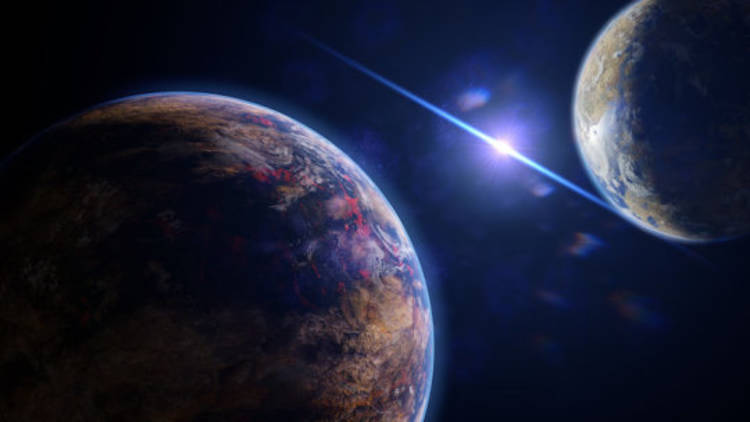


The red dwarf star Teegarden found in 2003 has recently attracted a lot of attention with two new potential planets discovered orbiting around it. The planets, located 12 light years away, are so far the closest to us that could potentially hold life.
The international team behind this research and discovery is lead by the German University of Göttingen [2], and the Spanish network Carmenes [3]. It also includes the Italian "planet hunter" Luigi Mancini.
“The goal of the project Carmenes is to find inhabitable earth-like planets around small stars close to the Sun,” explains Mancini.
This is exactly what the team is doing in researching the two yet to be declared planets, Teegarden B and C, that orbit their host the Teegarden star.
What is intriguing about these two spheres is that they both have a nearly identical mass to Earth and are in orbits that could allow liquid water to flow.
According to scientist assessments, the Teegarden star is at least eight billion years old. To put this into perspective, this is practically twice the age of our Sun. This infers that the planets orbiting around it have had much time to evolve and grow life.
These intriguing findings and the proximity of our systems create the perfect opportunity for astronomers eager to test out next-generation telescopes in the hopes of finding signs of life in worlds beyond Earth.
“The objective for the future is to directly observe these two planets with next-generation telescopes,” says Luigi Mancini, “like the E-ELT (European-Extremly Large Telescope) and the American TMT (Thirty Meter Telescope).”
This new technology and research will give insight that can further our understanding of these planets and their Earth-like atmosphere, possibly holding signs of life.
Source URL: http://test.casaitaliananyu.org/magazine/focus/facts-stories/article/two-new-earth-planets-discovered
Links
[1] http://test.casaitaliananyu.org/files/planetsjpg
[2] https://www.uni-goettingen.de/en/1.html
[3] https://carmenes.caha.es/